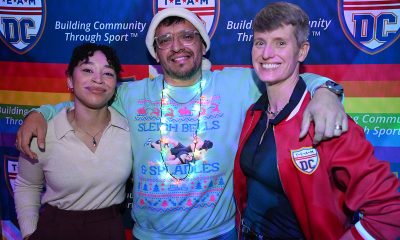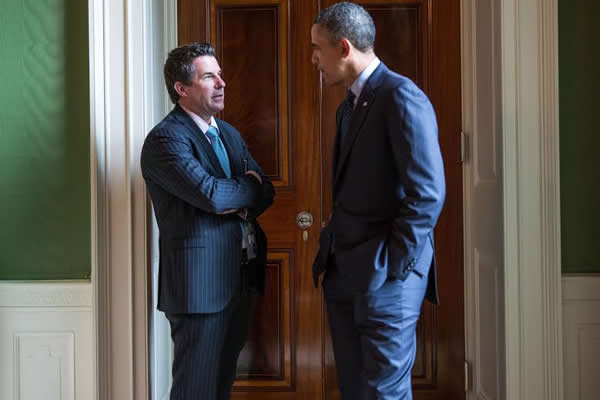Opinions
Breeders: Can straights be queer?
Our identities are not solely about our sex partners
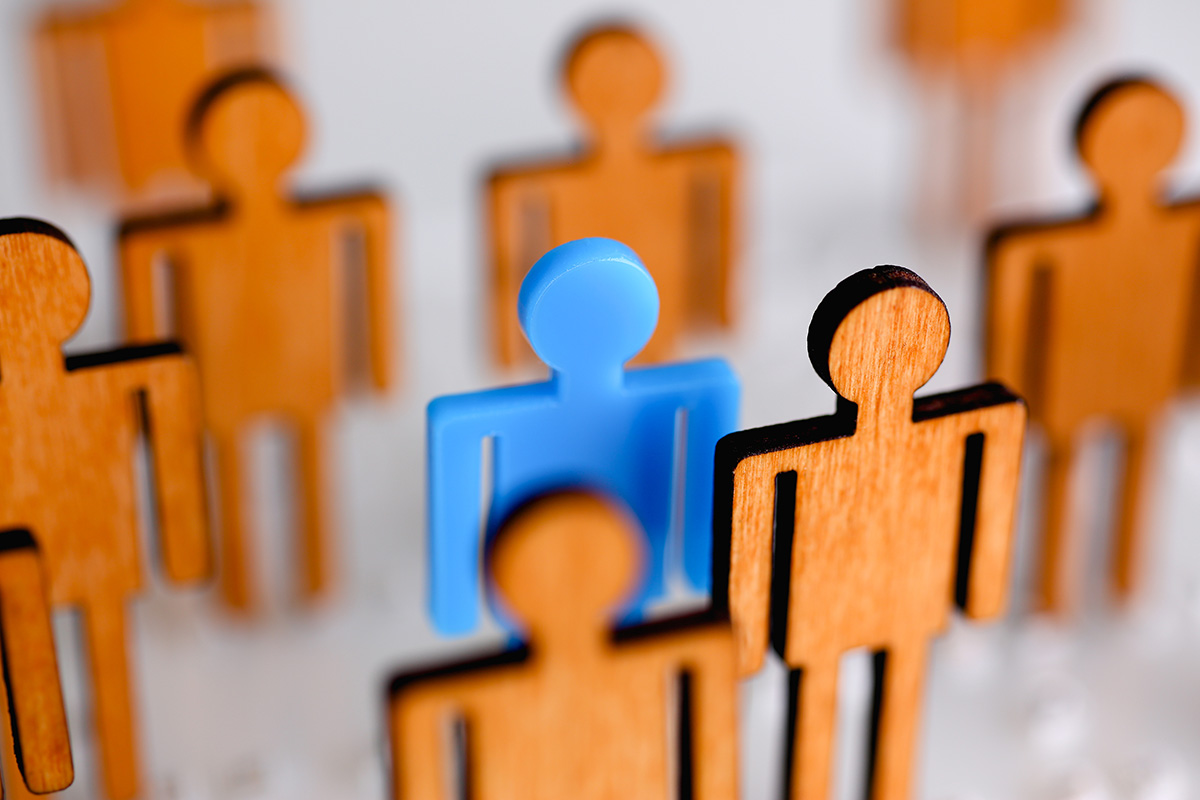
As a barback, I’m pretty damn annoying.
I push past you with my ice buckets. I take your glass away, sometimes before you’re finished. I bump into the bartenders, tell patrons to step aside, and cut the bathroom line, all while covered in sweat, stains, and sometimes a little vomit.
In contrast, the bartenders get all the glory. They charm your socks off with pleasant conversation and — oh, would you look at that? They made you a fancy drink, too. How lovely.
While I might sound bitter, I enjoy observing how the bartenders approach customer interaction. Some rely on wit, others on speed, a few on good ole fashioned kindness and, on occasion, a master who can employ all three. Yet there’s one bartender so charming, so magnetic, so comical, he leaves patrons (and some staff) swooning in his glow.
His name is Fred. Here’s the thing about Fred: He’s a six-foot-three-and-a-half-inch hunk of a man oozing what kids today call the rizz, or charisma to us older folk, and in the wake of this rizz comes scores of adoring fans. Here’s the other thing about Fred: he’s straight.
Gay gasp — a straight bartender in a gay bar? The mere notion may cause some waves. And here, in a queer publication, just before Pride no less, I dare to ask whether straights can belong in the queer community. Time to roll out the cancellation carpet, folks.
Admittedly, that reaction is understandable, for we gays are protective of our spaces. Fighting for nightlife is a cornerstone of our history; Stonewall was pivotal for a reason, after all. But the world is different now, isn’t it? There are more queers, more queer identities, and more allies all around us. As a result, we’ve made some significant strides.
Yet the tone toward our straight allies isn’t always the most positive. We detest the straight bachelorette parties, those gay-baiting straight dudes, that shrieking straight girl piercing our ears, and the overly affectionate straight couple taking up space. For many, the straights remain our adversaries, so much so that we degrade them with terms such as the title of this piece.
Take, for example, a few months ago at the Pub. It was an early Sunday afternoon just before the post-brunch rush when a sizable group of straight-looking college dudes overtook three tables on our covered patio. As they strolled in, every queer glared them down like a scene from a spaghetti Western. A few patrons even complained.
That was before we learned the group wasn’t there for a heist but rather their friend’s 21st birthday — the same friend who came out to them the night prior. Out of support, they all joined him in his first legal foray into a gay bar. If you’re not already thinking it, I’ll spell it out for you: That is fucking cute.
So, why were we so hostile? Are we projecting our own trauma? Are we always like this? To help me understand, and in what can only be described as the most sound scientific study the world has ever seen, I messaged 10 D.C.-area straight friends with a simple question: Have you ever felt judged inside a gay bar? After half replied yes, I grew more curious and asked 10 D.C. gays the same question. Of those, seven said the same.
Queers: me thinks we have a judgment problem.
Perhaps I should be surprised, but I’m not. I, too, have felt judged in gay bars. Certainly I’ve been the butt of jokes, and if it’s not me, it’s someone else. Yet according to the history we’re oh so proud of, gay bars should be safe spaces for queers. Now I’m left wondering: What does it mean to feel safe, and who qualifies as queer?
For the first question, consider my anecdote from earlier. To me, the birthday boy’s straight friends were as critical in facilitating a safe space for him as the bar they entered, for they encouraged him to be himself, which is what safety is all about. In fact, many of us have straights who support us — when we come out, when we discuss our lifestyles, when they join our gay escapades — all while defending us to others. In my own life the straights sometimes feel like a reprieve, particularly from the hard knocks the gay community can deliver, and there’s no better example than my good friend Alec.
Alec and I attended college together, and every so often he and I meet up at his house, order food, and smoke a ton of weed in his basement. We’ll catch up on life before diving into a show; right now, we’re watching the “Chucky” TV series (Yes, Chucky the scary redheaded doll, but the show is remarkably camp and queer. Turns out Don Mancini, the creator of Chucky, is gay).
During these hangouts, it often strikes me how connected Alec is to queer culture: he loves watching Bravo, his place is impeccably decorated, and he’s often showing me what’s popular on gay Twitter. Last time, having just read an article about actor Darren Criss identifying as culturally gay, I asked him, “Do you ever feel confined by straight culture?”
Alec repacked his bong as answered, “absolutely.”
When I inquired further, he explained, “My thoughts on straight culture can basically be summed up as ‘it’s boring’ and gay culture is a lot more fun. I’m not super into sports. I don’t golf. I don’t date. I’m not MAGA. I watched “The Sopranos” but once was enough. There’s not a lot for me in straight culture. I do, however, follow pop culture and entertainment news, I listen to good music, I take pride in my house and how it’s decorated, I love the “Real Housewives.” There’s just more for me in gay culture.”
Now back to the second question: who qualifies as queer? Must we look a certain way? Dress a certain way? Some might say enjoying sex with the same sex, but what if you’re not sexual? What if someone happens to be straight but rejects the same traditional norms and values we do? And what if that straight makes us feel safer than some gays for simply being who we are?
I usually prefer nuance, but when it comes to the question of whether straights can be queer, my opinion is absolutely. Definitely not all, but certainly some. Why? Because being queer isn’t solely about your sex partners. Rather, it’s about embracing non-normative sexual and gender lifestyles to allow queerness to flourish, and a heterosexual is just as capable of that mindset as a homosexual is of rejecting it (unfortunately those exist, but I’ll save that for another piece). Better put: when a straight person feels like a fish out of water in the pond of their own kind, well — what’s more queer than that?
Speaking of fish out of water, the other day I asked my favorite straight bartender how his time at a gay bar has been.
“It’s been very gay,” Fred so aptly replied, “and I mean that in the best way. It’s been a blast. Really couldn’t ask for a more accepting and open team than the one at LGP. I’ve learned more about the gay community in six months here than I would’ve learned in 10,000 years outside of it. It was a front flip cannonball into the deep end in the best way.”
That warmed my heart to hear. And if there was any doubt in my mind about Fred’s true orientation, his cannonball metaphor all but erased it.
Jake Stewart is a D.C.-based writer and barback.
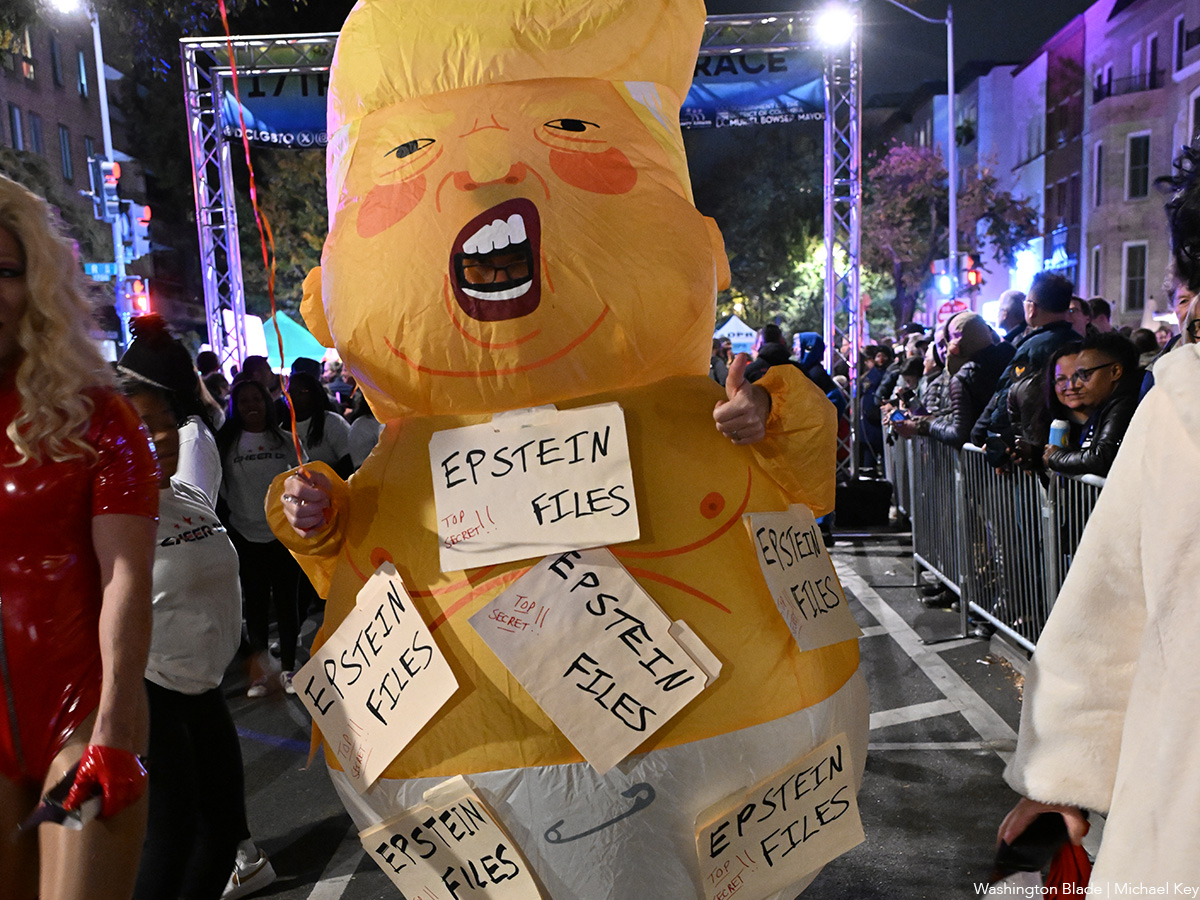
Trump saw the writing on the wall with regard to releasing the Epstein files. He tried to get ahead of the parade by asking Republicans to vote for release, instead of facing his biggest embarrassment when they were going to anyway. Then there were the major Republican losses in the last election. Now House Armed Services Committee Chair Mike Rogers (R-Ala.), and Senate Armed Services Committee Chair Roger Wicker (R-Miss.), and their Democratic ranking members, are investigating the Pentagon after it was reported Secretary of Defense Pete Hegseth potentially committed a war crime with regard to the bombing of boats suspected of running drugs. It really seems we are seeing the beginning of the fall of Trump.
That’s not to say the felon doesn’t continue to have the power to screw the country, and the world. He does. Those around him like Vought at OMB, and his personal Goebbels, Stephen Miller, will push him harder to advance Project 2025 before the mid-term elections. There are so many things in that 900-page document that have yet to be perpetrated on the American people. I am sure the felon doesn’t know half of them, as one can be quite confident, he never read it. Each day we wake to some new outrage by the grifter in the White House. His family cutting deals with the Saudis, upping and lowering tariffs as the mood strikes. Not in a rational way because they have already proven to be a disaster for the American people. Then the continuing destruction of our healthcare system by RFK Jr.
Then the felon threatens Venezuela, and illegally declares the airspace around it closed. The felon threatens Indiana Republican legislators who don’t go along with his request for redistricting, with primaries. A judge in Texas rules their redistricting is illegal, though the Trump Supreme Court did overrule that. He calls Marjorie Taylor Green a traitor, then his MAGA cult threatens her life. She resigns. He does the same to Democratic legislators who made a video telling the military they do not have to obey unconstitutional orders. The felon called that “SEDITIOUS BEHAVIOR, punishable by DEATH!” He went further and reposted a Truth Social post that read “HANG THEM GEORGE WASHINGTON WOULD !!” This now has his MAGA base threatening their lives. They are not resigning. All of this adding to the feeling his acts, and statements, clearly reek of desperation.
He continues to blame Biden, nearly a year after taking office, for his own failures. He blames Biden for not vetting the Afghani immigrant who shot the two National Guard members from West Virginia patrolling D.C. This, while it was his administration, that granted him asylum without any vetting, in April.
I find it incomprehensible there are still some people, who can’t, or don’t, want to understand attacking Democrats for what is going on today, makes no sense, when the felon controls the White House, Congress, and the Supreme Court. Staying home, or voting for third party candidates, with no chance of winning, is like voting for the Republican. In the recent elections we began to see those who don’t like what is happening, wake up. They realize only a vote for a Democrat will make a difference. We saw that across New York, New Jersey, Pennsylvania, Virginia, and Georgia.
As we approach the midterm elections, I plead with those who are not there yet, look at history, count how many independents were ever elected to Congress. In our system that rarely happens. Wishful thinking doesn’t win elections. Yes, I want Congress to look younger. I am happy Nancy Pelosi (D-Calif.), and Jerald Nadler (D-N.Y.), among others, have retired, allowing for primaries in their districts. I could name a few more in safe Democratic seats who I hope do the same. While not in office, young people should appreciate those who retire, might still have some wisdom from their years of service to share.
The young aren’t compelled to listen, yet someone like Pelosi, with her vast experience, could help a new person as they run to win, and then navigate the halls of Congress. If you look at all the demonstrations against the felon, and his administration, the age of the people demonstrating often skews older. Those like me have the time to demonstrate, and we do. We want to see the felon fall, and will work hard to make it happen. While too old to run for office, I will continue to voice my opinions. I will even endorse candidates I like. I suggest to all candidates it is important to do more than talk in generalities. You need an issues section on your website. Tell voters what you will do when elected. What bills will you introduce, which ones will you support. That may be old-fashioned, but it’s still important. And definitely be clear which party you will support if elected. I know, another old-fashioned idea.
As the felon continues to lose the support of the American people, I see young people begin to move to the Democratic Party, realizing if they step up to be counted, it will make a difference for their future. If this trend continues, I believe we are headed toward a better time in America.
Peter Rosenstein is a longtime LGBTQ rights and Democratic Party activist.
Opinions
Tammy Bruce, Trump’s lesbian nominee for deputy UN ambassador. Just say no!
Senate Foreign Affairs Committee advanced former State Department spokesperson’s nomination this week

One evening In the late 1990’s, I drove over to the home of my late friend, Jim Hormel, to review a number of countries to which he was being considered by the Clinton administration to serve as our country’s first openly gay ambassador. It was a very big deal. Secretary Madeleine Albright would eventually swear him in during a teary-eyed ceremony, but only after a recess appointment in order to avoid an ugly, partisan fight in the Senate over Jim’s sexuality.
Fast-forward to today, and our country has had over 30 openly gay male ambassadors — both career diplomats and political appointees — and one, single lesbian at an ambassador-ranked position at the Asian Development Bank, Chantale Wong. (Ambassador Wong is also one of only two people of color among the openly gay or lesbian ambassadors.) I am very proud to have helped convince Amb. Wong to come out of retirement to take on that important role, because the time was right for someone with her passion, experience, and commitment to push for inclusive development policies at a major international financial institution. In fact, she had occupied the position once before as acting executive director of the ADB under the George W. Bush administration, and used that expertise to successfully champion an inclusive development policy that explicitly names sexual orientation and gender identity as a non-discrimination category, as well as other programs that benefit community members. But getting through the Senate confirmation process was not an easy task before this second Trump administration, especially for those without the resources or connections to deploy their own personal lobbyists, even when the candidate was superbly qualified.
So, a few months ago, when I read that Tammy Bruce was nominated by President Trump to be one of our ambassadors to the United Nations, I choked on my coffee. I couldn’t believe that our second ever openly lesbian ambassador would be a far-right, anti-trans, anti-Muslim, Trump loyalist. But, maybe the choice was not so surprising after all, which then says a lot about the Biden administration’s priorities. Trump was also the president who made good on the Human Rights Campaign’s longtime push for an openly gay G7 ambassador, with the appointment of another far right, anti-Muslim, gay ambassador, Richard Grenell to Germany. These two people alone should convince any sane human why identity-politics alone has severe limits.
After 16 years of submitting short lists of qualified lesbian-identified and trans-identified candidates to the White House Office of Personnel Management to be considered for appointed ambassador positions, and also simultaneously trying to support senior, career diplomats who are lesbian or trans to advance in their careers, I was particularly frustrated and enraged. While I believe it’s time to move beyond identity politics, I also deeply believe that diverse representation matters. Not tokenization (and not donor-purchased ambassadorships) but exceptionally well-qualified, diverse American people, who represent the actual plurality of our nation, which makes us stronger. The foreign affairs arena, in particular, is overly white and male dominated. Think what you may about “DEI,” but a diplomatic corps that doesn’t reflect the diversity of our nation doesn’t make our country stronger — it actually makes us less globally relevant and decreases our understanding of this rapidly changing, multi-polar world.
The 34:1 ratio of gay men to lesbians among our nation’s openly queer ambassadors that exists today is infuriating to me as a woman, a feminist, a lesbian, and as a human rights leader. And yet, the nomination of Tammy Bruce, infuriates me even more. She is an extremist ideologue who uses her platform for hate.
Bruce’s hate centers on her anti-Muslim extremism. According to CNN’s Andrew Kaczynski and Em Steck, “Trump’s pick for deputy UN job questioned [the] loyalty of American Muslims … (Bruce) for years promoted inflammatory, anti-Muslim and conspiratorial claims, including suggesting that former President Barack Obama was a secret Muslim bent on harming America. A CNN KFile review of Bruce’s blog posts, social media posts, columns and radio commentaries starting in the early 2000s shows a pattern of demeaning language about Muslims, including suggesting that American Muslims needed to prove their loyalty after the Sept. 11, 2001, terrorist attacks … Bruce didn’t respond for comment.”
When nominating Bruce, Trump said, “after being a liberal activist in the 1990s, (Bruce) saw the lies and fraud of the Radical Left, and quickly became one of the strongest Conservative voices on Radio and Television.” Bruce wrote the book “The New Thought Police,” aiming to “expose the dangerous rise of left-wing McCarthyism.” In addition to poking fun at feminists, anti-racists, and progressives, she has particularly promoted misguided anti-trans ideology, such as championing the cause of Chloe Cole, a “detransitioner” who had top surgery at age 17. Bruce uses this outlier case to justify legislation to ban trans health care in the United States.
The extremist right loves to scapegoat trans people and their right to appropriate, life-saving health care. Confirming Ms. Bruce for this role as a U.S. representative at the United Nations, with all of her whacky and fringe ideology, is incredibly dangerous for U.S. citizens and for others throughout the world. The person who represents the United States at the United Nations must be able to talk to every other country representative, in order to be effective. Ms. Bruce will be viewed with suspicion and avoided because of her past statements and views. Again, such extremism has no place in our government or representing our country. In her confirmation hearing, Ms. Bruce called President Trump’s leadership at the United Nations “inspirational.” She refused to call the massacre in Sudan a genocide. She didn’t seem to understand what leverage the U.S. might have with the UAE to stop arming this genocide. She deferred multiple times to serving this President in whatever foreign policy aims he has. In this era of increasing authoritarianism, we do not need more obsequious servants to King Trump. Now that Ms. Bruce has been voted out of committee, this proud lesbian, respectfully requests all U.S. Senators to not confirm Ms. Bruce for U.S. Deputy Ambassador to the United Nations.
Julie Dorf is co-chair of the Council for Global Equality.
Opinions
Victory Fund continues to shun me and my place in LGBTQ history
Before Buttigieg, my presidential campaign made headlines
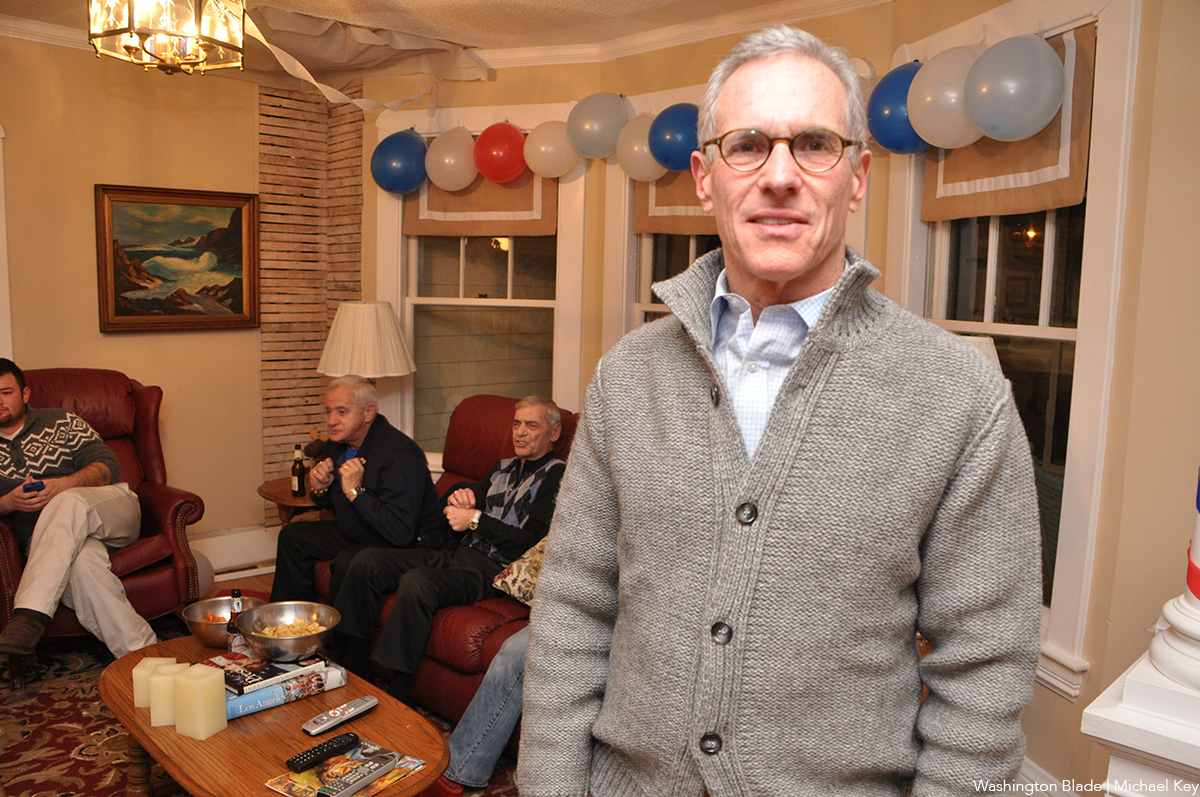
I am honored to be speaking this weekend at the National Council for the Social Studies Annual Conference (NCSS), made up of 5,000 teachers from across the county. I will be talking about my history-making campaign for president back in 2012, when I ran as the first openly gay major party candidate to do so.
I will be joining many other prominent featured speakers, including Supreme Court Justice Ketanji Brown Jackson, Washington, D.C. Episcopal Bishop Mariann Edgar Budde, Dr. Richard Haas, and House Minority Leader Hakeem Jeffries. This engagement was arranged by the prestigious History UnErased, and I will talk about my roller coaster run for president
It was a hard-fought, two-and-a-half year, full-time campaign in the Republican primaries. I appeared on six state ballots, gave hundreds of speeches, did thousands of media interviews and attracted thousands of volunteers, donors, and voters. In fact, when the primaries ended, I had received more votes than two former governors, Jon Huntsman, Jr. (Utah) and Gary Johnson (New Mexico).
My constant message to the LGBTQ community was, you can do anything you want to do in life, even run for president of the United States. I heard from so many people young and old that I was giving them newfound hope.
Eight years later, when openly gay Mayor Pete Buttigieg ran for president, I endorsed him in February 2019, served on his National Finance Committee, and did a lot of surrogate work on his behalf. We developed a strong bond, being the only two openly gay candidates to ever run for president. He told me, “You’re a trailblazer who made it a little easier for those who follow your path.”
I applied pressure on many of the nation’s largest LGBTQ organizations to endorse Pete early, when it would make a difference. I wrote op-eds in Newsweek and the Advocate urging the LGBTQ Victory Fund, HRC, The Task Force and many others to support Pete. Eventually the reluctant Victory Fund came around and endorsed Pete at a big splashy campaign event in Brooklyn on June 28, 2019 during WorldPride.
That early support from the nation’s sole organization to help propel openly LGBTQ candidates to victory, made a huge difference in Pete’s success.
I was not as fortunate. One of the first meetings I had was with Chuck Wolfe, the then head of the Victory Fund in January 2010. He blurted out, “we’re not going to help you!” And true to his word, they actually worked to hinder my historic run. They made me submit a number of applications including a 56-page campaign plan and budget. Several months after delivering it, Chuck told me they would not even put my endorsement to a vote. “You don’t want to know,” he told me. “Yes, I do,” I replied.
I have met with or spoken to all of his successors at the Victory Fund, offering my help and asking for some sort of recognition of my historic campaign. Finally in 2018, after a lot of negotiations, then-President Annise Parker gave me one sentence in their Under Our History section on their website.
I have been an LGBTQ activist and major donor since I worked closely with David Mixner to defeat the Briggs Initiative in 1978, which would have outlawed gay teachers in California. I spent 30 years as a political consultant. Since 2008, I became the only one, through my organization Californians Against Hate, to fight back against the mega donors to California’s Proposition 8 and other anti-same-sex marriage campaigns.
I shamed millionaires and billionaires and even the all-powerful Mormon Church, who funded and ran all these hateful campaigns. The New York Times published a full page column three years ago on all I did to help gay marriage become the law of the land, “Cancel Culture Works. We Wouldn’t Have Marriage Equality Without It.”
So, I’ve earned my stripes. That is why I find it ironic that while I am speaking to the 5,000-member NCSS gathering in Washington, the same weekend that the LGBTQ Victory Fund is holding its annual Victory Institute gathering a few blocks away, while they continue to shun me and my rightful place in history.
Fred Karger is the first openly gay major party candidate to run for president.
-

 The White House3 days ago
The White House3 days agoTrump’s shocking East Wing amputation—and the painful fallout Americans won’t ignore
-

 District of Columbia3 days ago
District of Columbia3 days agoThird LGBTQ candidate running for Ward 1 D.C. Council seat
-

 Health2 days ago
Health2 days agoThe harsh truth about HIV phobia in gay dating
-

 Arts & Entertainment3 days ago
Arts & Entertainment3 days agoCynthia Erivo, Eva Victor, and ‘Blue Moon’ bring queer representation to Golden Globe film nominations

